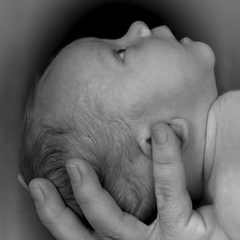
Understanding Hydrocephalus and the challenges parents face
Hydrocephalus is a condition that impacts upon the brain. The fluid that surrounds the brain and spine, called cerebrospinal fluid, needs to flow away from the brain. In healthy babies this happens naturally, as a valve transports the fluid into the bloodstream. Hydrocephalus is the blocking of this valve, a failure of the fluid to absorb in the blood or as a result of the body producing too much fluid. Fluid builds up around the brain and causes brain damage. In some cases, this damage is significant, especially if treatment is not received promptly.

5 Types of Hydrocephalus
There are five main types of hydrocephalus. These include:
- communicating hydrocephalus
- non-communicating hydrocephalus
- ex-vacuo hydrocephalus
- arrested hydrocephalus
- normal pressure hydrocephalus
Each of these conditions prevent normal draining of fluid in some way, whether it is the blood’s inability to absorb fluid, a blockage or as a result of a traumatic brain injury. The causes can be congenital, acquired through injury or illness such as stroke and meningitis, or idiopathic, which can happen at any stage in life with no known reason.

How Parents Can Spot Symptoms
Parents of children who have congenital hydrocephalus will have spotted that the baby may have an unusually large head. There may also be muscle spasms, poor feeding, irritability and drowsiness. If the condition appears later in the child’s development, either acquired or idiopathic, then the symptoms will include difficulty walking, poor coordination, headaches, confusion, drowsiness and possible bowel and bladder problems. Considering that the damage to the brain continues whilst the condition goes untreated, it is worth seeking medical advice as soon as possible.
In the short term, the doctors will seek to reduce pressure around the brain. This will mean inserting a shunt to drain the excess fluid. This is normally inserted into the abdomen and helps your child to absorb fluid into the blood stream. There may be other options suggested too, which are less invasive. It is worth asking your doctor about possible alternatives. The long term effects are similar to any other kind of brain injury and the treatment options focus on helping to deliver independence and maximise the possible recovery.
Rehabilitation
The long term rehabilitation of children with injuries to the brain can be traumatic and difficult. It will mean helping the child to regain mobility, possibly speech and improve developmental markers. This may involve pushing the child beyond what they feel capable of doing and can be very difficult for parents to experience. It is certainly worth seeking the support from support groups, such as those offered by charity Headway. Seeking comfort from other parents who are having to cope with the long term rehabilitation of a child will help you through some of the more difficult moments.
Useful Resources

